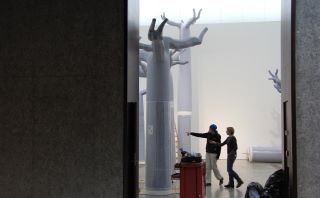Starting Up After Graduating
UncategorizedShare:
http://www.flickr.com/photos/ianwade1975/4142984073/
Tomorrow I am giving a talk to graduating students from Tralee IT, students from new media, broadcasting, music technology and information systems.
I will be talking about branching out on your own and the opportunities for creative and talented people working in these sectors. The Transmedia world is growing apace these days and companies like beActive prove there is a market and a need for services that bridge TV, Film, Broadcsting and Digital. I sincerely believe it’s a great time to be a graduate with skills like these.
I fully understand how scary it is starting out for the first time, making that decision and constantly moving your idea forward. There are many barriers to branching out but there are a host of great reasons why you should.
So in preparation for my talk, I surveyed the class to find out just how many have thought about going it alone. Happily 60% have given starting their own business some thought. Of course the respondents worry about the cost (63%), the current economic situation (25%) and (13%) feel they need further training. But the fact that they are thinking abut starting up, despite these concerns is a really good thing. Now our job is to support these recent graduates to bring their ambition to fruition.
Is it a good time to startup if you are a graduate? The supports for startups is really good in Ireland right now. There are so many free events from meetps to Open Coffees where you can and discuss your ideas and network. Tap into these networks and the knowledge you can gain is immense.
I am very excited to find out more about our newest graduating class and like every other time I present, I am sure I will learn way more than I will teach.
My thanks to Louise for the invitation.
Image thanks to Disorganised Photographer






